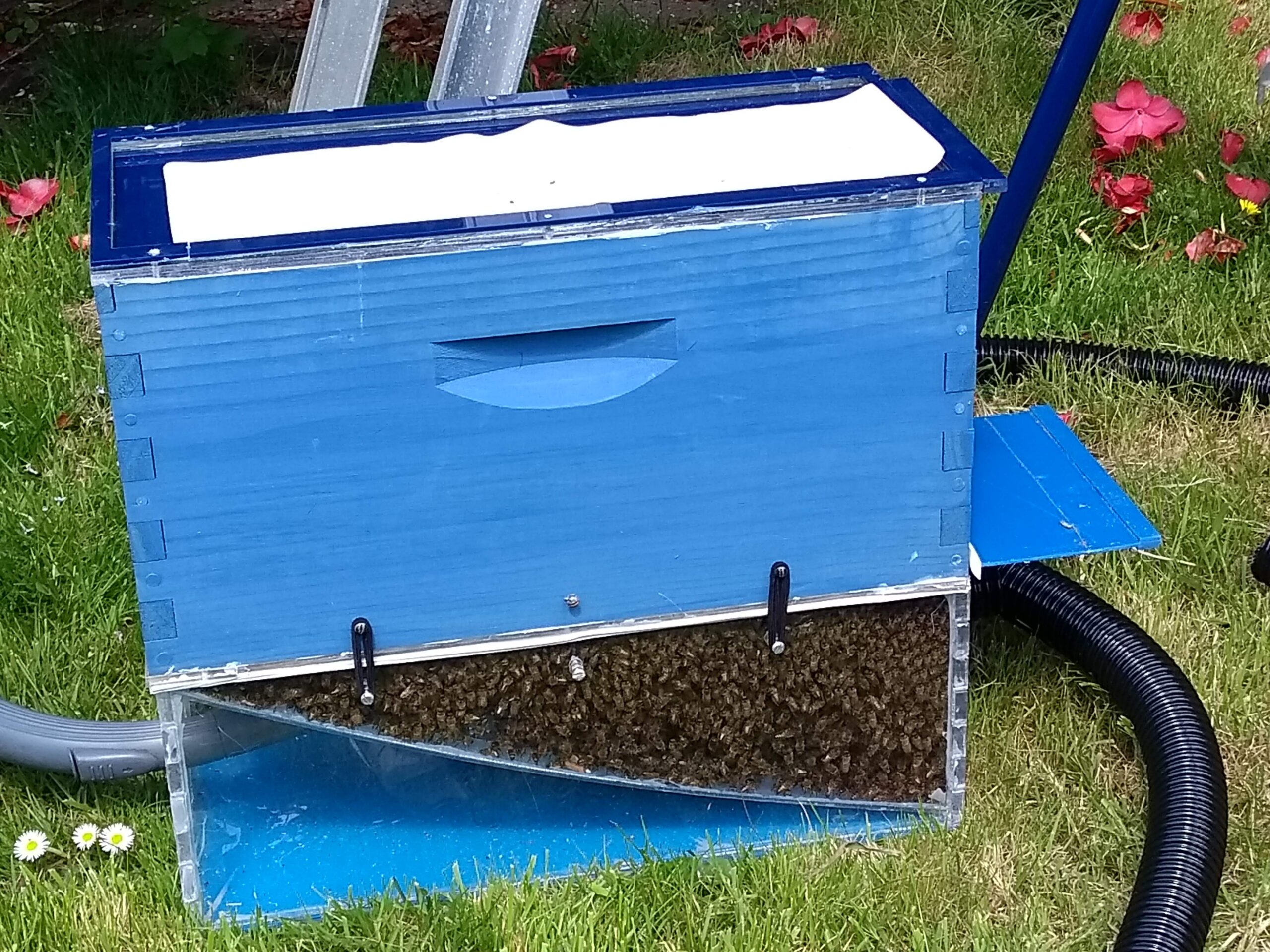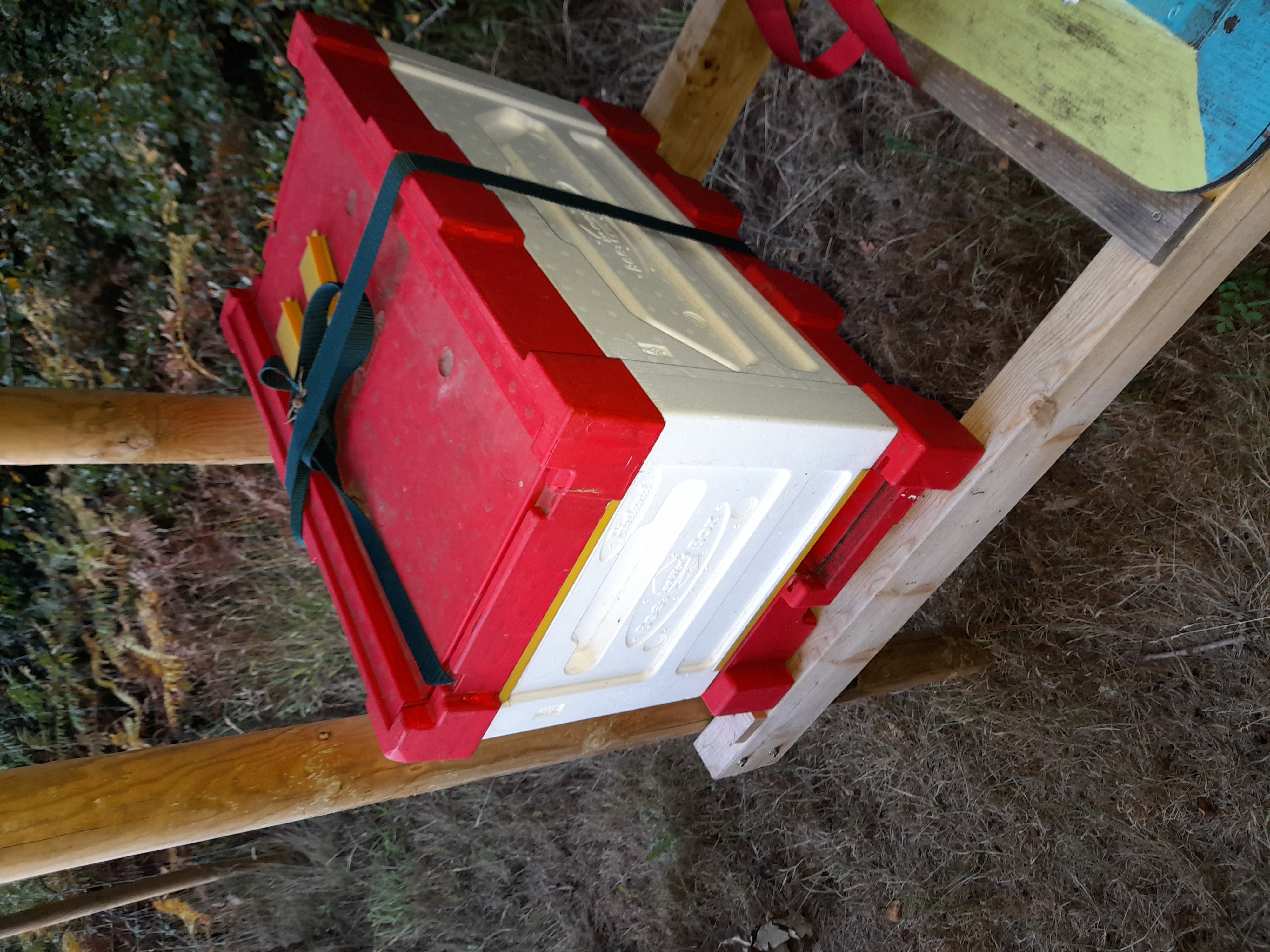Honey Bee Swarms
Swarms of honey bees can take many forms but are essentially a ball of bees. If you have one in your garden, near Horsham, I will come and collect it for free. Just drop me a message.







Swarms occur naturally and are nature’s way of reproducing the nest as well as the bees. Usually between April and July, if a nest of bees is super strong and healthy the colony will decide to swarm. a recently laid egg will be placed in a special queen cell and will develop into the next queen.
The old queen will then leave the nest with half of the bees alongside her. This old queen will then set up a new colony but while they wait for the scouts to find the perfect place they will rest as a swarm on a tree or post or somewhere similar. They are not aggressive and have no honey to defend, but should not be disturbed without the proper equipment.
Is it a Honey bee?

Equipment
Some swarms are easy to collect and can be done simply with a white sheet, a bucket, and a nuc hive whilst others require a bit more effort.



I have a bee vac that allows me to safely suck the bees into a box using a hoover if they are in an inaccessible place. The goal is always to safely remove the bees and put them into a new home where they can flourish and not cause any nuisance or damage.

Bees nests and Cut-Outs
If you have a bees nest that needs removing then it is possible to remove the nest in what is known as a cut-out. Firstly check that the bees are indeed honey bees. there are 4 most common bee like insects that often make homes in our houses and gardens.
- Honey bee: Brown and black see the image above. These will damage things if left unattended as you could end up with a HUGE nest with thousands of bees and Kg’s of honey dripping through your walls.
- Bumbles: Fury balls of fluff with white red or yellow bottoms. these often nest in walls or trees or the ground. they are docile and non aggressive and live in small colonies they do no damage and can be left till July when they take them selves away. best bet to leave them.
- Red Mason bees: similar to the honey bee but with a red tint to their tops and yellow undercarriage. These are chilled and docile living in the walls and can just be left till the winter where you seal the hole if you don’t want them to come back the next year.
- Yellow jackets or wasps. This is a job for pest control.
Removing an established bees nest will take a lot more time and resource than a swarm. The aim is still the same but the process required cutting into the housing and removing the nest along with all the bees.
I do these projects but there is a charge for them.